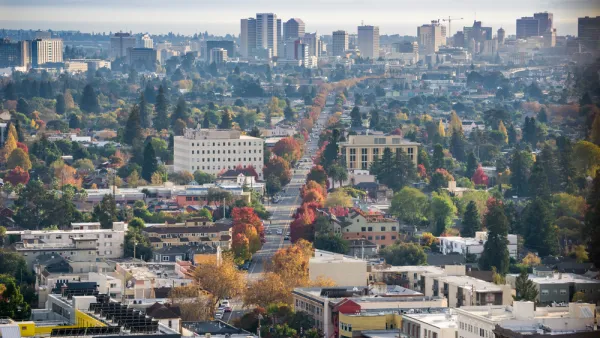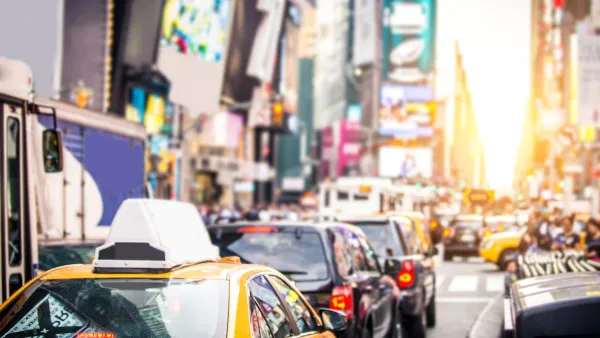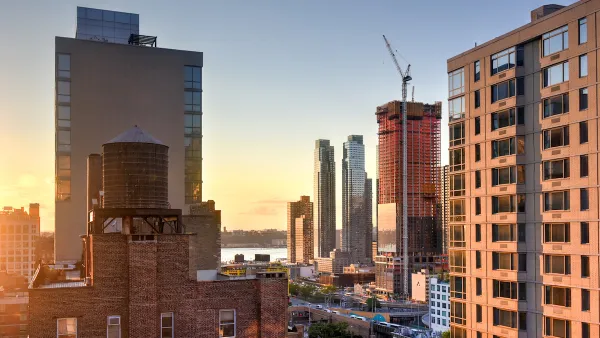NYT reporter Amy O'Leary observes Manhattan's ubiquitous construction while suffering through overcrowded sidewalks, stores, and subway trains, and wonders just how many more people the crowded borough can absorb.
O'Leary provides a historical basis just in case the reader thinks the crowds are intolerable now. She reports that Manhattan had been much more crowded in 1910 when a "staggering 2.3 million people crowded the borough, mostly in tenement buildings. It was a time before zoning, when roughly 90,000 windowless rooms were available for rent..."
Then came "1980, with the subsequent flight to suburbia, the population fell to 1.4 million." The 2010 population is 1.586 million.
Sky's the limit.
Most interesting is the perspective of "Ed Glaeser, a Harvard economist, (who) inevitably comes up in conversations about how cities should grow. In his recent book, "Triumph of the City," he makes an argument - which many consider persuasive - that dense places are uniformly better and more interesting than emptier ones, and that they should be allowed to develop unfettered, even if it means building towers where brownstones once stood."
"Affordability is the first reason. If you build up, he says, housing prices will fall and more people will be able to live in their own sliver of Manhattan sky. And that's a good thing, Mr. Glaeser adds, since the energy of all those newcomers will fuel innovation and entrepreneurship, attracting talent and growth to create a virtuous circle. From energy-efficiency to life expectancy to finding a date or something to do on a Saturday night, Mr. Glaeser argues that denser places have the edge."
Thanks to Mark Boshnack
FULL STORY: Everybody Inhale: How Many People Can Manhattan Hold?

Analysis: Cybertruck Fatality Rate Far Exceeds That of Ford Pinto
The Tesla Cybertruck was recalled seven times last year.

National Parks Layoffs Will Cause Communities to Lose Billions
Thousands of essential park workers were laid off this week, just before the busy spring break season.

Retro-silient?: America’s First “Eco-burb,” The Woodlands Turns 50
A master-planned community north of Houston offers lessons on green infrastructure and resilient design, but falls short of its founder’s lofty affordability and walkability goals.

Test News Post 1
This is a summary

Analysis: Cybertruck Fatality Rate Far Exceeds That of Ford Pinto
The Tesla Cybertruck was recalled seven times last year.

Test News Headline 46
Test for the image on the front page.
Urban Design for Planners 1: Software Tools
This six-course series explores essential urban design concepts using open source software and equips planners with the tools they need to participate fully in the urban design process.
Planning for Universal Design
Learn the tools for implementing Universal Design in planning regulations.
EMC Planning Group, Inc.
Planetizen
Planetizen
Mpact (formerly Rail~Volution)
Great Falls Development Authority, Inc.
HUDs Office of Policy Development and Research
NYU Wagner Graduate School of Public Service




























